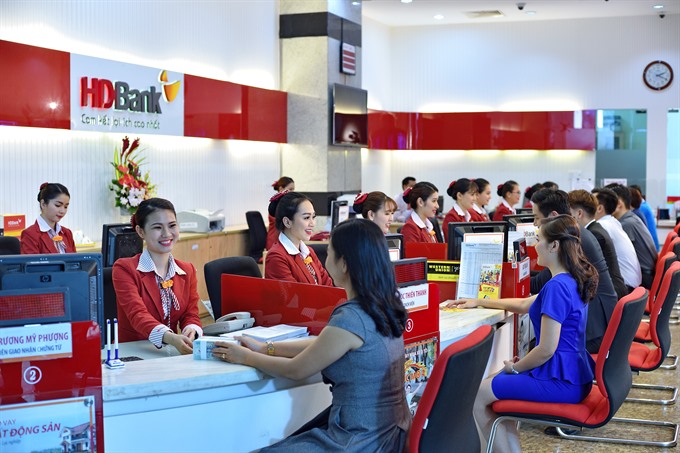 Economy
Economy

Stock market statistics show that recently foreign investors have been net sellers, with sales reaching a total value of over VNĐ10 trillion (US$436.6 million) from February 2018 to now, in contrast with the strong net buying in January this year.
 |
| Customers conduct transactions at a branch of HDBank. — Photo courtesy of HDBank |
HÀ NỘI — Stock market statistics show that recently foreign investors have been net sellers, with sales reaching a total value of over VNĐ10 trillion (US$436.6 million) from February 2018 to now, in contrast with the strong net buying in January this year.
This is one of the reasons the VN-Index has fallen sharply, erasing all gains so far this year. When foreign investors post a high net selling rate, the risk is that foreign capital may reverse, flowing backwards instead of into the economy.
If a nation experiences foreign capital outflow on a large and prolonged scale—not just for a short period—the nation must be prepared to face consequences such as exchange rate increases as the domestic currency depreciates, inflation hikes and banks receiving fewer deposits and therefore having to cut lending. These factors can lead to reduced investment and lower real gross domestic product (GDP) growth. The ability of governments and businesses to repay international loans can also become more difficult, since when the domestic currency falls they will have to spend more of it to repay loans issued in a foreign currency.
In Việt
According to data from the Foreign Investment Agency (FIA) under the Ministry of Planning and Investment, foreign indirect investment (FII) reached $1.89 billion in the first quarter of this year, a year-on-year increase of 121.6 per cent. If foreign capital flight were occurring, it would have had to begin recently and on a massive scale in order to cancel out the large quantity of first-quarter FII.
Additionally, although foreign investors have been net sellers since February, the value of the capital from this net selling is not necessarily transferred into a foreign currency, nor is it necessarily transferred abroad. It is possible that foreign investors still hold a portion of their capital from this net selling in Vietnamese bank accounts, in Việt Nam đồng (for example, while waiting for new investment opportunities). Therefore, the net sale of foreign investors generally has not caused a reversal of foreign capital in Việt
Of course, it cannot be ruled out that some foreign investors have converted the collected capital into a foreign currency and transferred it abroad. But if this happens at a considerable scale then it will be reflected in the third factor, the exchange rate. In fact, the VNĐ/USD exchange rate only increased significantly in late March, but softened after that, and only "broke out" from the middle of last week, up by about 90 Việt
It may be argued that the exchange rate quoted by the banks (and the central rate of the State Bank) does not accurately reflect the situation of foreign currency tension in Việt
It is also suggested that the foreign-capital reversal from FII has been "masked" by the continued influx of foreign direct investment (FDI). Therefore, in this respect, Việt




